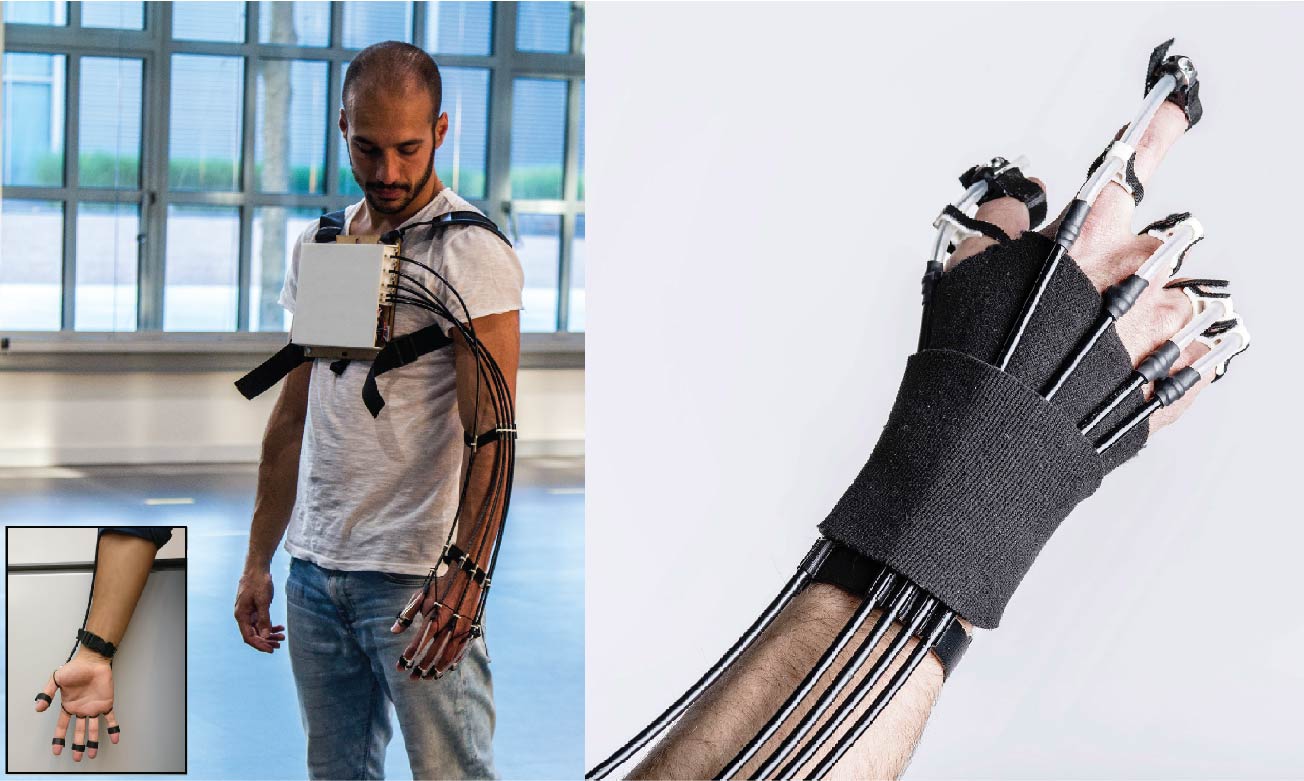Project description
Impairments to hand sensorimotor functions are among the most common consequences of traumatic and neurological conditions affecting the central and peripheral nervous systems, such as cerebrovascular accidents, spinal cord injuries, and cerebral palsies.
Due to the fundamental role that our hands play during everyday living, deficits in arms and hand functioning are heavily disabling conditions that drastically reduce the personal independence during daily life and the social participation of affected individuals, making their restoration one of the topmost priorities for these users. Proper and comprehensive management of such conditions is therefore key not only to ensure a proper quality of life for users with motor disabilities and their families, but to limit as well the growing costs due to prolonged disabilities for national healthcare systems.
At the CNBI and BioRob laboratories at the École polytechnique fédérale de Lausanne, we developed a novel hand exoskeleton with the main purpose of assisting independence and promoting intensive use, both within clinical and domestic settings.
The system was iteratively designed, developed and tested in collaboration with partner clinics, including healthcare professionals (such as neurologists, occupational therapists, ergotherapists, physiotherapists), and with users who suffered from motor disabling conditions (such as e.g. spinal-cord injuries, amyotrophic lateral sclerosis, cerebrovascular accidents and cerebral palsies). Experimental results showed that the exoskeleton could help these users regain capabilities needed for independence in daily life they had lost since their disabling accidents, such as e.g. grasping and holding glasses and bottles for autonomous drinking, use of cutlery for autonomous eating, and writing with pens.
Based on a proprietary artificial tendon technology, the system is fully wearable and portable, functionally usable in both assistive and rehabilitative scenarios and customizable to the needs of different users. The system aims at assisting hand functions directly during meaningful activities of daily living, with the ultimate goal of supporting independence and accelerating recovery due to continuous and intensive use.

Figure 1: The hand exoskeleton developed at the CNBI and BioRob laboratories, École polytechnique fédérale de Lausanne. The system consists of (i) a chest-pack that hosts the control, energy storage and actuation units, and (ii) soft artificial tendons that allow to control fingers flexion and extension, enabling power, precision and lateral grasps. The device is fully portable and lightweight (~50 g on the arm, 980 g on the chest), aiming at supporting impaired hand motor functions for prolonged periods and during typical activities of daily living.
Media
Video of tests with end-users: https://ieeexplore.ieee.org/document/8100925/media#media
Summary video: https://actu.epfl.ch/news/feedback-enhances-brainwave-control-of-a-novel-han/
Researchers
Luca Randazzo, Iselin Froybu, José del R. Millán, Auke Jan Ijspeert
Publications
L. Randazzo, I. Iturrate, S. Perdikis and J. d. R. Millán, “Mano: A Wearable Hand Exoskeleton for Activities of Daily Living and Neurorehabilitation” in IEEE Robotics and Automation Letters, vol. 3, no. 1, pp. 500-507, Jan. 2018. DOI: 10.1109/LRA.2017.2771329.